Do-it-yourself wiring in the kitchen: wiring diagrams + features of the electrical work
In order for the electrical wiring in the kitchen to last for a long time and withstand intensive operating loads, it must be correctly designed and installed in full accordance with generally accepted rules.
The work is quite painstaking and requires time, responsibility and a reasonable approach. Indeed, in an hour it is in the kitchen that up to 50% of household appliances available in the apartment or house are located.
And for each device it is necessary to provide a convenient location and proper power supply. Then all units will function in the required mode and will not cause any difficulties to the owners. In this article we will talk about how to properly lay wiring in the kitchen, what materials and tools will be required for this.
The content of the article:
Types of wiring - an overview of the pros and cons
The wiring is carried out in two ways: open and hidden. Each option has its advantages and disadvantages. The choice of the most suitable one directly depends on the material from which the room was built, on the planned design and the presence or absence of massive decorative elements on the walls and ceiling.
Features of creating open wiring
Open wiring is the simplest and most affordable option for providing the premises with the necessary electrical energy. Work does not require serious efforts and is carried out quite quickly.
In addition, it is not necessary to spoil the interior by dismantling individual fragments or the entire interior decor for laying wires. And in the event of a fire or short circuit, the problem can be eliminated immediately without wasting time looking for a malfunction.
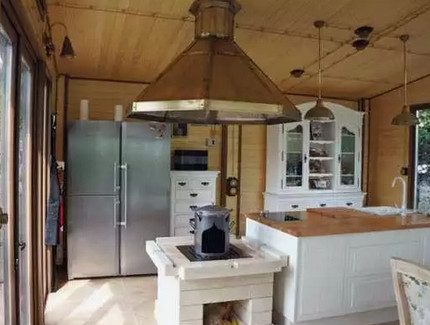
The desired level of security of the system is ensured by means of special polyvinyl chloride cable channelsconsisting of a box attached to a wall or ceiling and a practical patch cover equipped with locking grooves.
Electric wires are placed in them and pulled to a power outlet, household appliances or lighting fixtures that require a connection.

Products demonstrate high electrical insulating qualities, do not burn and have ductility for bending. Are issued in the most different shades "under a tree" and easily give in to toning by any types of modern building paints.
Serious manufacturers that have proven themselves in the market give a guarantee of up to 25 years on products and promise that during this time the material will not lose its characteristics and provide the wire with reliable and high-quality protection against any external manifestations.
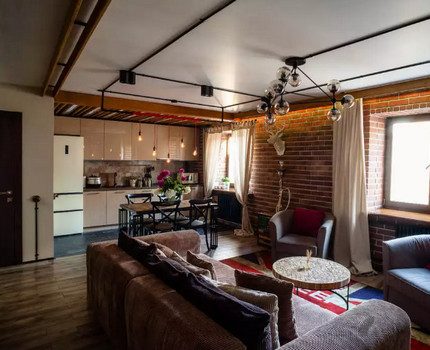
Some experts consider fully or partially open wiring in the kitchen to be dangerous. Water vapor and sudden temperature changes caused by the use of various household units negatively affect the power grid and lead to malfunctions.
The wires overheat, lose the integrity of the protective sheath and fail prematurely, often causing a short circuit and a fire hazard. However, some owners neglect this advice and, for the sake of design, take unjustified risks.
Options for arranging open wiring in the kitchen:
We also recommend that you read our other article, where we talked in detail about the installation of open wiring and the most common errors. Read more - read Further.
The nuances of arranging a hidden method
Hidden wiring provides for the laying of all the connecting elements inside the walls and ceiling. For proper arrangement in the ceilings and supporting structures, small grooves are punched, wires are laid there, and then the recesses are filled with alabaster or cement and a decorative finish is applied.
This provides a high level of security and allows you to make in the kitchen any, the most complex interior.
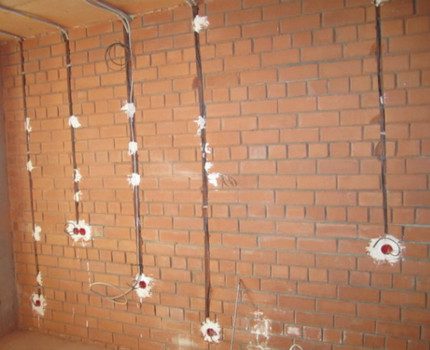
However, this method also has disadvantages. To detect the problem zone and to carry out even the most minimal repairs, you will have to dismantle the exterior finish and punch the wall. It is not possible to get to the place of malfunction in any other way.
Tools required for work
For a convenient and correct installation and electrical work, the home master will need the following hand tools:
- a set of Phillips and straight screwdrivers;
- soldering iron;
- hammer;
- pliers;
- electric shtorez if it is supposed to do the hidden conducting;
- an electric hammer drill equipped with drills with a victory tip (for laying channels in concrete or brick walls);
- tester to check the presence / absence of voltage in the network.
All tools must have an integral protective coating on the handles made of durable materials that do not conduct current.
If, despite the advice of professionals and the requirements of fire safety, an open or combined wiring option is chosen, you will need strong and durable dowel nails. With their help, it will be possible to securely attach cable channels even to concrete walls.
For surfaces that have a softer, more pliable structure, the simplest self-tapping screws or nails of small or medium size are suitable.
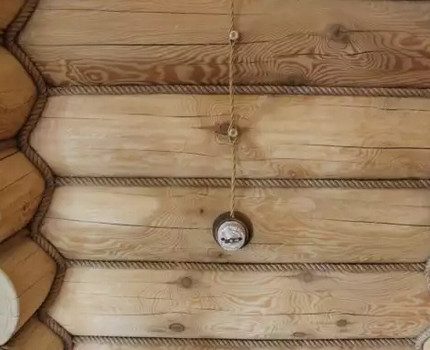
For quick, reliable and clear fixation of wiring in the gates, you will need gypsum or alabaster. They freeze almost instantly and allow you to immediately continue to work, without wasting precious time. Detailed instructions on wall chipping for electrical wiring can be found in this stuff.
How to choose the right cable section?
A wire with the correct cross section is another important element for the correct arrangement of the energy supply of the kitchen. He is chosen, taking into account the total power of household appliances and lighting devices planned for use.
To connect table lamps, floor lamps, chandeliers or spotlights, they usually take copper wires or cables equipped with PVC insulation of PPV or PV brands that can withstand high operating loads (about 4.1 kW) for a long time.
The minimum permissible core cross section in this embodiment is 1.5 millimeters.
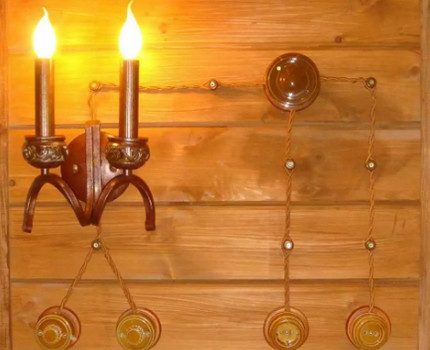
To the sockets responsible for connecting powerful modules of household appliances (microwave, coffee maker, toaster, etc.), wires of the same class, but of a larger cross section (from 2.5 mm), are brought.
If you neglect this item and take a thin wire, it will not withstand the operational load and in the future will lead to a short circuit or fire.
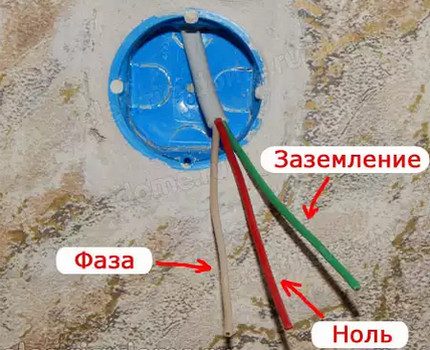
If it is planned to use appliances with a metal casing for lighting the kitchen, it will not be possible to dispense with a thin wire for connection. In order to avoid voltage getting on the lamp housing, you will need to bring a three-core cable or wire with a powerful protective sheath to the object.
Only in this installation option will metal fixtures be completely safe.
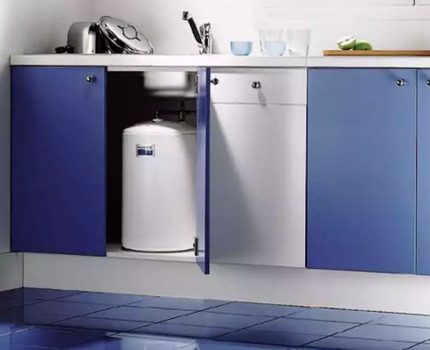
When connecting high-power appliances (multi-burner, oven, etc.) that consume 8-12 kW per hour, you will definitely need a separate branch of a three-core cable with copper conductors and a strong, reliable nayrite or PVC insulation.
After installing the device, it will have to be earthed using the third core of the cable. The cross section of each core in this case should not be lower than 6 mm. We also recommend that you read our other article, which describes in detail how calculate wire cross section for home wiring.
General preparatory work
All work with wiring in the kitchen begins with the preparation of the project. First, determine the amount of equipment planned for subsequent deployment.
Mandatory positions include:
- refrigerator;
- stove (oven, hob).
Among the additional devices that make life more convenient and comfortable, there are:
- microwave;
- Dishwasher;
- electric kettle;
- a sandwich maker;
- slow cooker;
- extractor hood;
- food processor;
- mixer;
- coffee machine, etc.
Some complete the kitchen with all these items, others choose hotel positions, and others complement the list with a TV and a washing machine. All of these options are considered valid provided that the wiring and installation are properly organized for each unit of a separate outlet.
Then, a drawing is made on paper and the prospective arrangement of furniture, lighting fixtures and household appliances relative to the layout of the room is marked on it. The location of outlets and switches / ons is also indicated there.
At the next stage, find out the type of network entering the living room. If a single-phase power supply is used, it will be problematic to connect several powerful household appliances simultaneously. You will have to either reduce the number of units used, or turn them on separately, so that overload does not occur in the network.
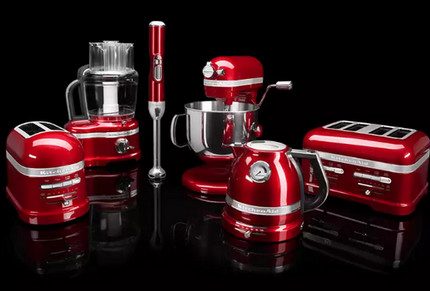
A three-phase network allows you to create wiring with a solid margin of power and makes it possible to use household appliances in the most convenient mode for themselves. Go on the linkto find out about the most popular socket outlets in the kitchen.
How to calculate the optimal wiring power?
In order to provide all kitchen appliances and lighting equipment with the necessary amount of electricity, it is necessary at the stage of creating a wiring project to calculate the total power of all appliances planned for use. The rated power is indicated in the data sheet of the unit.
Having added all the indicators, it will become clear how many kilowatts will be required for correct operation.

Typically, the value ranges from 8-15 kW, but in fact it can be either more or less.Of course, the situation when all devices turn on at the same time is extremely rare, but, nevertheless, it is recommended to create wiring with some power reserve in case of any unforeseen situations
The nuances of installation closed and open
For the correct installation of closed electrical wiring, preliminary marking is first applied to the walls, according to a pre-compiled scheme.

Then, according to the figure, a special tool (chisel, chisel cutter, drill, etc.) is made in the walls of the strobes for laying the wire and then masking it under the finish.
If there is a need to make a turn, it is carried out strictly at an angle of 90 °.
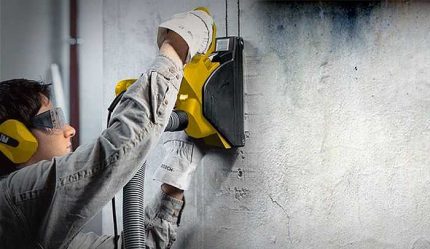
At the next stage, nests are prepared for socket boxes and built-in sockets, and then the wires, enclosed in corrugated pipes, are laid in the strobe channel. To fix the position every 30 cm, holes are made in the strobe and the cable is fixed with dowels. At the end of the installation, the channels are coated with gypsum or alabaster solution.
In the prepared recesses, plastic sockets are mounted and wires are brought out through them for subsequent connection of sockets and switches. The position is leveled according to the building level and fastened to a screw and mortar.
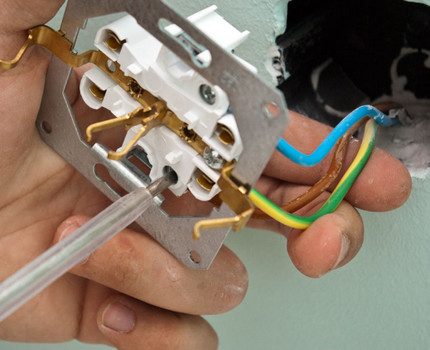
Twisting places of several wires are masked with polymer or steel boxes, placing them flush with the level of the wall. At the last moment, cables from outlets, lighting points, and on / off switches in the junction box are connected to the main input wire of the electrical network. The connection areas are neatly protected with electrical tape or PPE.
The process of installing wiring in a closed way is as follows:
Features of the open mounting option
To organize open wiring, special rubber wires with a copper or aluminum core, a dividing base and an external polyvinyl chloride protective layer are used.
They are fixed to the walls and ceiling on nails threaded through porcelain rollers, which have good insulating properties. The mounting blocks are placed at a distance of 500 mm from each other.
How to place sockets?
Before proceeding with the installation of outlets, mount an input shield. Special fuses are placed in it (residual current circuit breakers - RCD).In case of excessive voltage, they will be able to de-energize the system, preventing a short circuit or fire.
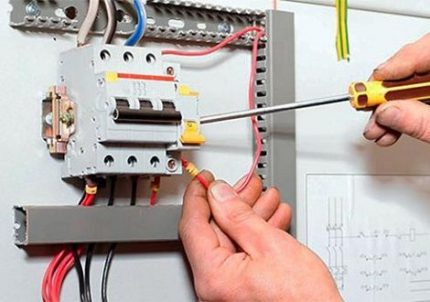
Up to 5 parallel connections are connected to each RCD element with a separate loop (depending on need). Local and general lighting circuits are connected separately. When the shield is installed, proceed to the organization of the correct wiring of outlets in the kitchen.
For such an event, the general rules apply:
- In the immediate vicinity of the sink or stove, sockets are never placed. Moisture and hot vapors during cooking can cause deformation of the body of the part, short circuit or fire.
- When laying the connecting cable do not leave sagging long wires, but pull them to the wall with suitable fasteners.
- The outlet itself should be 16 amperes. Weaker parts as a result will not withstand the intense operational load, will begin to melt or spark, and will soon require replacement.
- Sockets are located in a diameter of not more than 1 meter from the appliance. A greater distance will require the use of an extension cord, and this will be inconvenient and unsafe.
- Install sockets in strict accordance with general safety standards (at a distance of 30-40 cm from the floor). If there are children in the house, they will equip hidden sockets or “hide” them in the countertop or other pieces of furniture.
In order for the socket to serve for a long time and withstand full operational load, models equipped with nickel-plated lamellas and ceramic plates are chosen. They are distinguished by endurance and fully work in active mode for a long time.
Tips and current safety guidelines
Kitchen electrical wiring is one of the most important sections of the entire electrical network in an apartment or private house. It is advisable that professionals who have specialized specialized knowledge, suitable qualifications and experience in similar work are engaged in its installation.
But usually these services are highly valued, and many home masters, deciding to save money, try to independently draw up a general wiring diagram in the kitchen, so that they can then lay wires, wiring and install outlets.
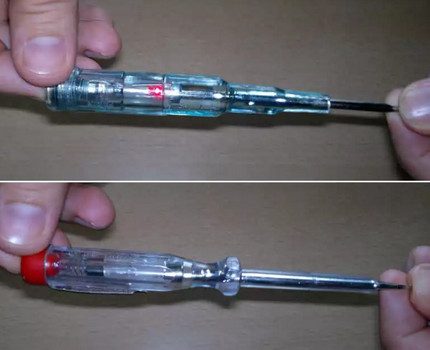
This approach is quite acceptable provided that you are attentive to the matter and knowledge of the general safety rules. After all, electric energy is not only light, heat and other amenities in residential premises, but also a constant source of increased danger.
Electrical Safety
When arranging electrical wiring in the kitchen, all standards must be strictly observed and the generally accepted safety rules must be adhered to.
This will protect against errors that could lead to fire in the wires, short circuit and electric shock in the future.
- The wiring is carried out strictly when the electricity is off. If the switchboard is in the general access area, a warning sign about ongoing work is hung on it.
- Connection to the central network of household appliances is done according to the accompanying instructions, which is always included with the equipment.
- For work, tools equipped with an insulating coating that does not have cracks, potholes and any other external damage are used.
- When installing electrical wiring, screwdrivers, pliers and pliers having structural or fixing elements created from conductive materials are not used.
- Immediately prior to installation, the premises organize cleaning and carefully eliminate any dampness (evaporation on the windows and the ceiling, puddles or drops of water on the floor, etc.).
- All activities with electrical systems are carried out only with dry hands. For an additional guarantee, they use special gloves with a rubber coating, thus protecting themselves from possible injuries and burns.
Knowing these simple rules and clearly following them, correctly lay the wiring, while avoiding electric shock, even an amateur who does not have much experience in working on such a plan will be able to.
Conclusions and useful video on the topic
The video details how to organize wiring in the kitchen and provide all household appliances with full power. In addition to the basic information, the video contains a description of interesting nuances and some useful tips for home masters:
How to properly position the outlets in the kitchen so that they harmoniously fit into the future interior, are convenient to use, invisible and absolutely safe for both adults and children:
Features of the formation of wiring in the kitchen. Tips and tricks from a professional for home masters:
Organization of wiring in the kitchen with your own hands is a long process that requires a lot of attention, accuracy and scrupulousness. It is very important to choose the right wires for wiring, carry out all work in strict accordance with the developed and approved project documentation and strictly comply with safety regulations relevant to the arrangement of electric networks.
Then the wiring will serve for a long time and will provide all kitchen appliances and lighting with full power.
Do you have personal experience installing electrical wiring in the kitchen? Perhaps you can give valuable advice to our readers? Please share your opinion in the block below.

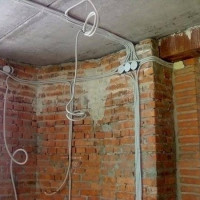 How to conduct wiring in the apartment with your own hands from the shield: basic schemes and rules + installation steps
How to conduct wiring in the apartment with your own hands from the shield: basic schemes and rules + installation steps 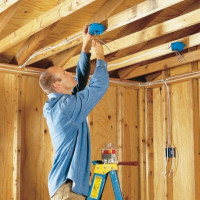 Wiring in a wooden house: design rules + step-by-step installation
Wiring in a wooden house: design rules + step-by-step installation 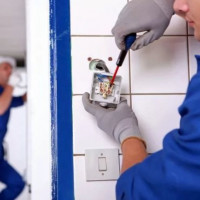 DIY wiring: how to properly perform electrical work
DIY wiring: how to properly perform electrical work 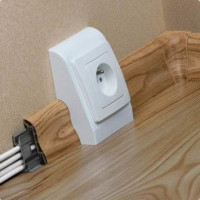 Installation of open wiring: a review of the technology of work + analysis of the main errors
Installation of open wiring: a review of the technology of work + analysis of the main errors 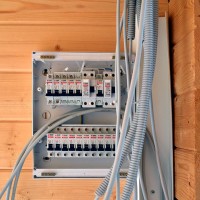 Wiring in the apartment: an overview of the main schemes and the procedure for performing work
Wiring in the apartment: an overview of the main schemes and the procedure for performing work 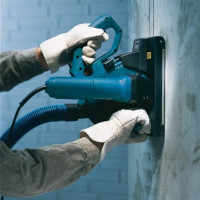 How and with what to wall the walls for wiring: briefing on the construction work
How and with what to wall the walls for wiring: briefing on the construction work  How much does it cost to connect gas to a private house: the price of organizing gas supply
How much does it cost to connect gas to a private house: the price of organizing gas supply  The best washing machines with dryer: model rating and customer tips
The best washing machines with dryer: model rating and customer tips  What is the color temperature of light and the nuances of choosing the temperature of the lamps to suit your needs
What is the color temperature of light and the nuances of choosing the temperature of the lamps to suit your needs  Replacement of a geyser in an apartment: replacement paperwork + basic norms and requirements
Replacement of a geyser in an apartment: replacement paperwork + basic norms and requirements
It is clear that vintage is in fashion now, but I would not recommend doing open wiring in the kitchen. It is clear that this is a necessity in wooden houses, but in other cases it is better to ditch the walls and hide the wiring. Here it is not only aesthetics, but also functionality. In the kitchen, it will be necessary to periodically clean, and open wiring will clearly interfere with this.
Hello. Open wiring has many advantages. In particular, if you want or there is a need to change the wiring, you do not need to ditch the repair. As for cleaning, cable channels solve this problem.
The kitchen is a room with high humidity and temperature, so it is advisable to make the wiring hidden. When open, it is advisable to use moisture-proof cables, sockets and switches. Almost all kitchen appliances have increased power, so do not save on outlets. Ideally, each device plus one just in case (for a coffee grinder or blender). Do not make wire connections that you then plaster!
Good afternoon, Alexander. If your kitchen has high humidity and temperature, then you need to do ventilation. Types of electrical wiring for the kitchen are determined by the PUE. In order not to retell, attached a screenshot.
By the way, PUE includes bathrooms and showers as “special zones”. The electrical installations of these zones are regulated in detail by GOST R 50571.11-96. The document, I emphasize, does not rank the kitchen as a "special room."
If for some reason there is no way to ditch the wall for wiring, then a good option is to use cable channels. Inexpensive, but very useful and functional thing, besides easy to install.